Penguins are perhaps among the best-known birds on Earth, although ironically at first glance they scarcely seem to belong to that class. All are built around a similar body pattern, being flightless with long flippers instead of wings and having webbed feet. While appearing somewhat clumsy on land, in the water they are superb, agile and fast swimmers. They prey on marine invertebrates such as krill and small squid, as well as small fish depending on the species of the penguin. In turn they are predated on by larger marine mammals such as seals and killer whales.
Most penguins are extremely social animals and live in colonies of vast numbers. This also has some practical importance, since Emperor Penguins at least use this density of numbers to huddle together against the cold during those times when they await the return of their mates with food. Normally one or two eggs are laid, but in times of hardship usually only one chick will survive, the stronger receiving any food available. Despite this apparent hardship and the threat to penguins from environmental pollution and global warming, this group of birds is for the most part quite healthy in numbers, although some local declines, eg in the Falkland Islands, have been reported. They are entirely located in the southern hemisphere, being distributed mainly around Antarctica and the South Atlantic but also found in South Africa, South America, and Australia and New Zealand.
There are six genera of penguins, comprising a total of 16-18 species. The King- and Emperor Penguins of the genus Aptenodytes are the largest species and are distinguishable by their height, long beaks and yellow and/or orange patches across the upper breast. Eudyptes species are noted for their crests of yellow feathers in various arrangements according to species and their colonial behaviour, while Megadyptes has a black head diffused with yellow. The Spheniscus penguins are all fairly round-headed and similar in appearance, having variations on a basic theme of a white stripe running from the eyes to the breast. Pygoscelis species have rather horizontally elongated heads, and Eudyptula are a bluish hue on top rather than black.
| Species Name |
Common Name |
Distribution |
Size/Weight |
Notes |
| Genus Aptenodytes |
| A. forsteri
 |
Emperor Penguins |
Antarctica |
66lbs |
The Emperors are the largest living penguins. It is distinguished in appearance by its bright yellow upper breast that connects to a patch on the otherwise black head. The back is blue-grey. These penguins nest on Antarctica proper, which gives rise to some interesting nesting arrangements: a single egg is laid which is then incubated by the male beneath a fold of abdominal skin. The incubating males stand huddled together thus for two months without any food while their mates gather food at sea. When they return, the females regurgitate for the chick and then take over care while the males head off to the sea to feed. The chicks do not enter the sea until they have molted. The whole family spends the summer at sea. Emperors are unique among all birds in that they may spend their entire lives without ever coming to hard land (as opposed to shelf ice or floes). |
| A. patagonicus
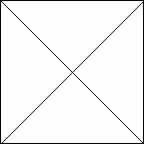 |
King Penguins |
Tierra del Fuego (?), Falklands, S Georgia, S Sandwich, Marion, Crozet, Kergulen and Heard islands, and Macquarie Island SE of Australia & SW of New Zealand |
30 lbs |
King penguins are similar in appearance to Emperors but can be told apart by the orange, rather than yellow, of their upper breast and their smaller size (they weigh about half as much). They also breed in different areas, much further north. A single egg is incubated but Kings nest much closer to the water, in low and often marshy locations. This arrangement allows the parents to take it in turn to feed and guard the chick. The chick is born in late spring or early summer and does not leave until it is about one year old. |
| Genus Pygoscelis |
| P. antarctica
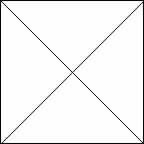 |
Chinstrap Penguins |
Similar to northern part of Adelies' range, inc. W Antarctic islands |
10 lbs |
The Chinstraps derive their common name from a narrow black stripe running down the otherwise white chin. |
| P. papua
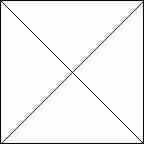 |
Gentoo Penguins |
N Antarctica, N Antarctic, most subantarctic islands and Falklands |
12-13½ lbs |
The Gentoo can be distinguished from the Adelie by its yellow bill and the white band across the top of its head that joins both eyes. |
| P. adeliae
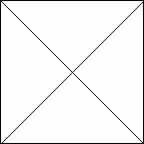 |
Adelie Penguins |
Antarctica, S Shetland, S Orkney, S Sandwich and Bouvetoy Islands |
11 lbs |
This is one of the "blackest" penguins in appearance, the head and bill being all black. Adelies live in fairly communal rookeries and build circular nests in a territory of about 2-2½' in diameter (Simpson). Prior to this, males will often court females by bringing them a pebble. Females lay 1-2 eggs over a period of 1-5 days: if one or both are lost the number will be made up within that period. The female then goes to sea to hunt while the male incubates the eggs: upon her return he likewise leaves to break his fast. Incubation takes about one month. Within a month of hatching the chicks leave the nest and join a communal "creche", where although there is no obvious adult care they seem to gain some protection from predators (mainly skuas). Adults still only feed their own chicks, whom they recognise by voice. After another month the chicks shed their down for an immature plumage, start swimming and feeding themselves, and leave their parents, who also molt at this time. Young adelies do not breed until their third year at the earliest and often not until the fifth or even eighth. |
| Genus Megadyptes |
| M. antipodes
 |
Yellow-Eyed Penguins |
S South Island, New Zealand, and islands southward as far as Campbell Island |
11 lbs |
Quite distinctive in appearance, as the back heads are diffused with yellow, notably the cheeks and top of the head. There is also a yellow band that runs around the back of the head and joins both eyes, forming a small circle around them. The native Maoris knew this penguin as the hoiho. Unlike many penguin species Yellow-Eyeds do not travel far and even outside the breeding and raising season do not go to sea for much longer than a week (Simpson). They live in small groups among tussock grass or scrub but occasionally will nest near or even under houses (Simpson).. Breeding is very seasonal: two eggs are laid in September-October and incubated for about six weeks. The parents normally manage to raise both chicks, feeding them for about 15-16 weeks until March when the adults go through their annual molt. Some individuals are known to live for over 20 years. |
| Genus Spheniscus |
| S. magellanicus
 |
Magellanic Penguins |
S America inc. Patagonia and southern Pacific coast, Tierra del Fuego and Falklands |
11 lbs |
The Magellanic penguin is very similar in appearance to the Black-Footed but can be distinguished by the narrower white band runnig from the beak and eye to the neck, and by and extra black stripe across the chest. It has a shorter beak than the Peruvian. All the Spheniscus penguins nest in a similar, opportunistic manner, either building a nest of any available material or simply using an available crevice or similar shelter if not. |
| S. humboldti
 |
Peruvian Penguins |
S America (Pacific coast, not extreme south) |
9 lbs |
Lacks the double stripe of the Magellanics. |
| S. demersus
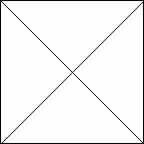 |
Blackfooted Penguins/Jackass Penguins |
Southern Africa |
6½ lbs |
Very similar in appearance to the Peruvian penguins, but the ranges of the two never overlap (being on separate continents!) so no confusion should be necessary. However, Simpson points out that the ranges of the Blackfoots and the Magellanics do occasionally overlap at sea, and that a few Blackfoots have the double stripe of the Magellanics, proving a recent common ancestry. Simpson notes a record of eighteen years in captivity for a Blackfoot penguin. |
| S. mendiculus
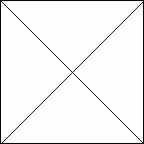 |
Galapagos Penguins |
Galapagos Islands (Fernandina and Isabella). |
5 lbs |
The Galapagos is the most equatorial of the penguins, and interestingly also one of the smallest. With the possible exception of the White-Flippered penguins they are also the least populous of penguins. Adults rarely go far from the islands when at sea. Breeding is determined not by fixed seasons but by the coolness of the surface water, which triggers reproduction when it falls below 75°C/24°F: this means that breeding may occur at any time and more than once a year. The penguins molt before breeding. Two eggs are laid: the success in raising one or both chicks is largely dependent upon the food supply. |
| Genus Eudyptes |
| E. chrysolophus
 |
Macaroni Penguins |
Subantarctic islands and S Sandwich, S Shetlands and S Georgia; occasionally Falklands and Antarctic peninsula |
10 lbs |
Crests are a rich orange colour and somewhat "combed back" in appearance. |
| E. crestatus
 |
Rockhopper Penguins |
Most islands between 30°50'S and 50°40'S, inc. Tristan da Cunha and esp. Falklands |
5½ lbs |
Crests start halfway back along the head on a yellow line and are "combed down" in appearance. The top of the head is somewhat straight compared with the other species in this genus, giving it a more "triangular" appearance. These are the most widespread of penguins, and Simpson notes that wherever two species of this genus occur together, one is bound to be E. crestatus. |
| E. sclateri
 |
Erect-Crested Penguins |
Bounty, Antipodes and Campbell Island, occasionally S New Zealand |
8 lbs |
Crests start halfway back along the head along the yellow line as with Rockhoppers but are "combed up" in appearance, pointing backwards rather than downwards. |
| E. schlegeli
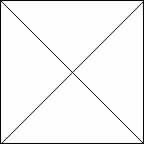 |
Royal Penguins |
Macquarie Island |
10 lbs |
Crests similar to those of Macaronis, but the chin and face are white. |
| E. pachyrhynchus
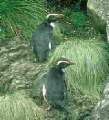 |
Fiordland Penguins |
SW South Island, New Zealand, Stewart Island and smaller adjacent islands |
6½ lbs |
Similar in appearance to Erect-Crested penguins, but the crest slopes backwards and downwards. Simpson notes also that the cheek is often palely striped. |
| E. robustus
 |
Snares Island Penguins |
Snares Island group (<80m south of Stewart Islands, NZ) |
6½ lbs |
Very similar to Fiordland penguins but the skin around the bill is paler and the cheek rarely striped (Simpson). |
| Genus Eudyptula |
| E. minor
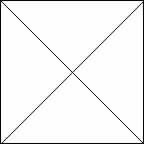 |
Little Blue Penguins/Fairy Penguins |
Australia (from Sydney through Tasmania to Freemantle), New Zealand (North Island, N & S ends of South Island) |
1½ lbs |
This is the smallest living penguin, and also (together with E. albosignata) the most nocturnal and one of the least social. By day they remain in their shelters. Oddly, however, in some parts of Australia large numbers do go into the sea and return to land together, a phenomenon not recorded elsewhere. Breeding is roughly seasonal, peaking around spring: some pairs breed twice in one year. |
| E. albosignata
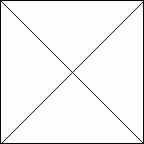 |
White-Flippered Penguins |
New Zealand South Island (Banks Peninsula, Lyttleton Harbour, and N/NE of Christchurch) |
3½ lbs |
It is argued that sometimes this penguin is merely a subspecies of E. minor. Details are as for E. minor. |
















